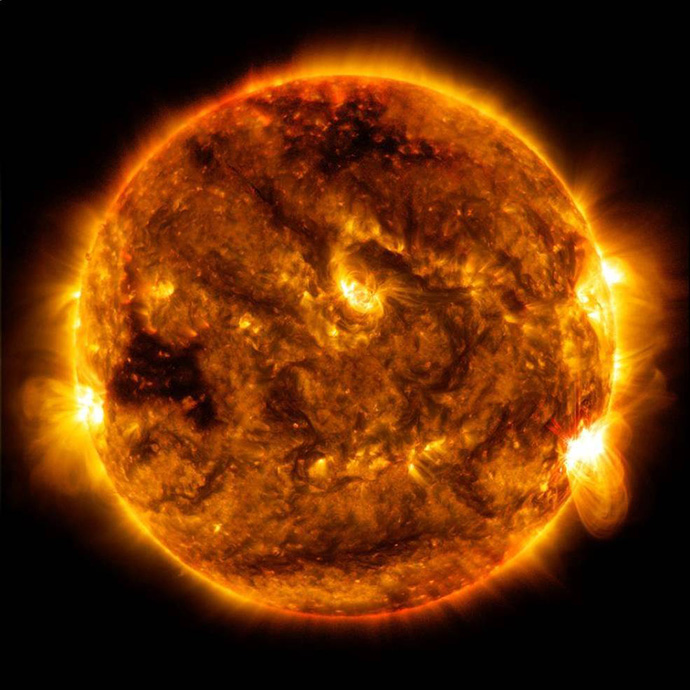The solar observations will be made using the spacecraft "MUSE" which was selected by NASA, February 10th, to be built for launch in 2026. The mission has a budget of 192 million dollars.
Multi-slit Solar Explorer (MUSE) will help researchers better understand the conditions in the sun's corona by measuring the processes that happen faster. The instruments at MUSE will detect solar explosions faster than, for example, NASA's IRIS (Interface Region Imaging Spectrograph).
The Principal investigator for MUSE, Bart De Pontieu is Professor II at RoCS and works at the Lockheed Martin Advanced Technology Center (LMATC) in Palo Alto, California. He has worked on the NASA application together with colleagues from RoCS where Professor Mats Carlsson, Professor Viggo Hansteen and Professor II Juan Martinez Sykora are involved. They are "Co-Investigators" at MUSE and have worked hard on the application since 2016. All three are very happy with yesterday's news.

Many years of effort
Professor De Pontieu explains that the work with MUSE started more than six years ago, and that the successful end result is due to countless hours of hard work by the MUSE team. First for the SMEX version of MUSE in 2016, and since 2019 for the MIDEX version. De Pontieu looks forward to further collaboration with the RoCS team to develop the mission and to analyze data when it comes down.
There will be some exciting years ahead, which will eventually lead to many new discoveries about the Sun.
Important milestone
Director Mats Carlsson at RoCS says that there were five project proposals that made it to the final round and MUSE was one of those who received funding to continue working on the design.
NASA then selected two science missions - MUSE and HelioSwarm - to help improve the understanding of the dynamics of the sun, the solar-earth connection and the ever-changing space environment. NASA writes in its press release from February 10 that the missions will provide deeper insight into our universe and provide important information that can protect astronauts, satellites and communication signals such as GPS.
Professor Viggo Hansteen, who currently works 75% at the Lockheed Martin Advanced Technology Center (LMATC) in Palo Alto, California, states that MUSE will give scientists the opportunity to study rapid changes in the sun's corona, and on a large spatial scale: - Finally we get the tool we need to give us the chance to solve the riddle "Why and how are the outermost layers of the solar atmosphere heated up to several million degrees?" The next few years will be very exciting.
MUSE and HelioSwarm will provide new and deeper insight into the solar atmosphere and space weather
This is stated by Thomas Zurbuchen, assistant administrator of science at NASA's headquarters in Washington. - These missions not only expand the science of our other heliophysics missions - they also provide a unique perspective and a new approach to understanding the mysteries of our star.
A deeper understanding of the Sun
The MUSE mission will help scientists understand the forces that drive the warming of the sun's corona and the eruptions in the outer region that are the basis for space weather. The mission will provide deeper insight into the physics of the solar atmosphere by using a powerful instrument known as a multi-slit spectrometer to observe the sun's extreme ultraviolet radiation and obtain the highest resolution images ever taken of the solar transition region and corona.
The mission will also provide complementary observations from heliophysical research such as the Extreme UltraViolet Spectroscopic Telescope and ground-based observatories.
